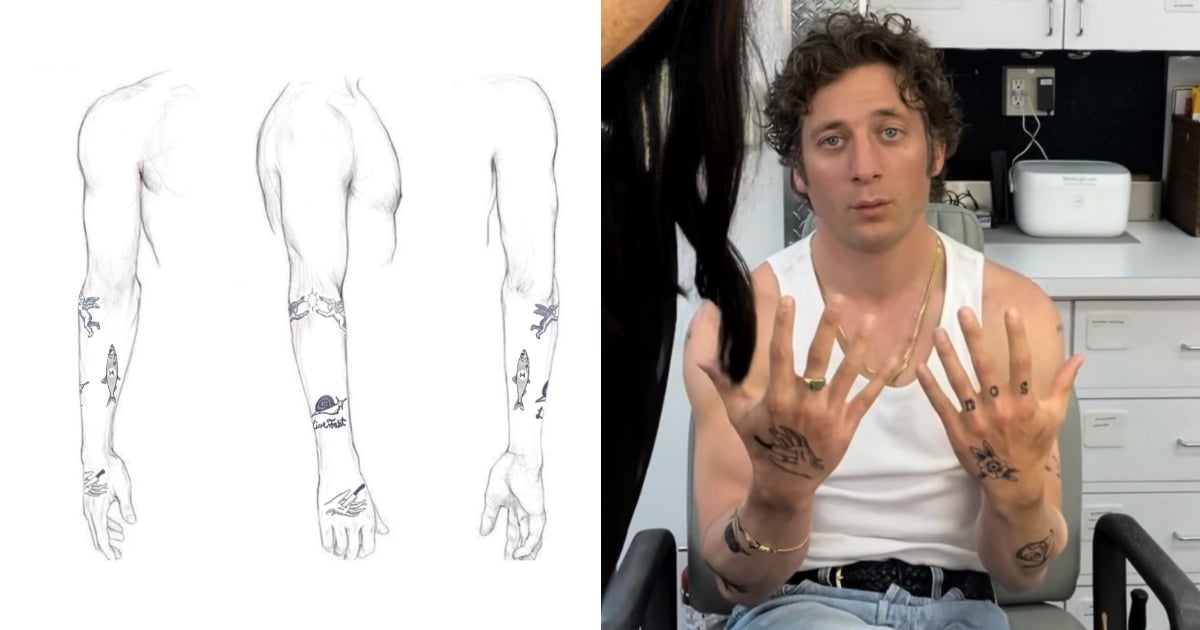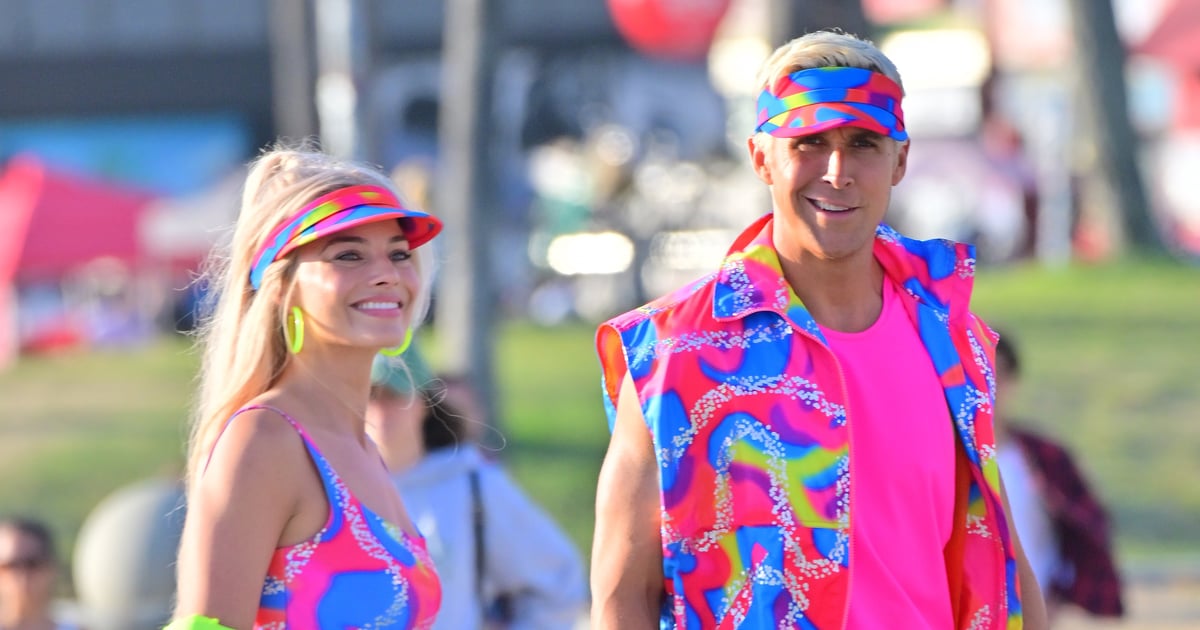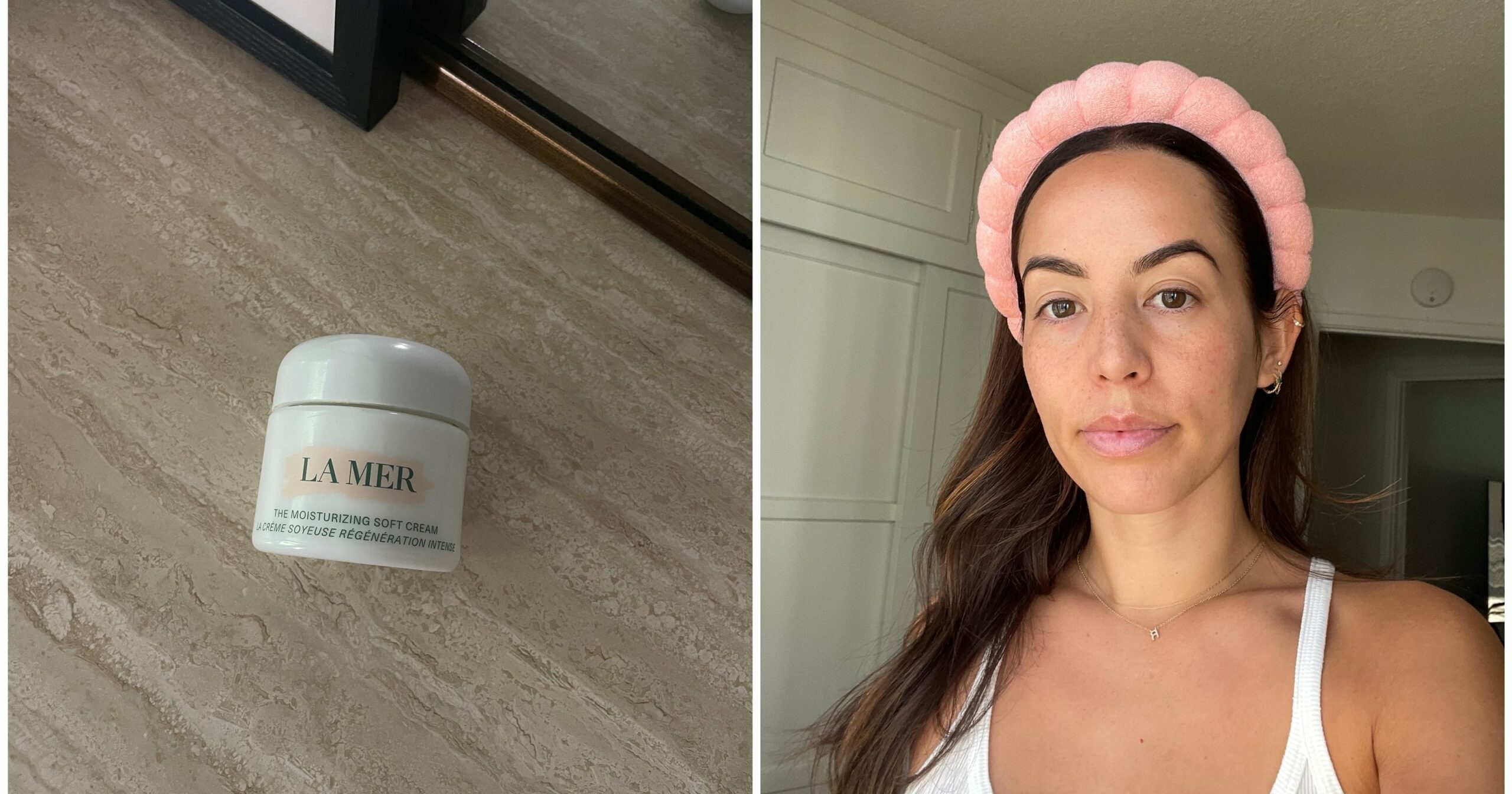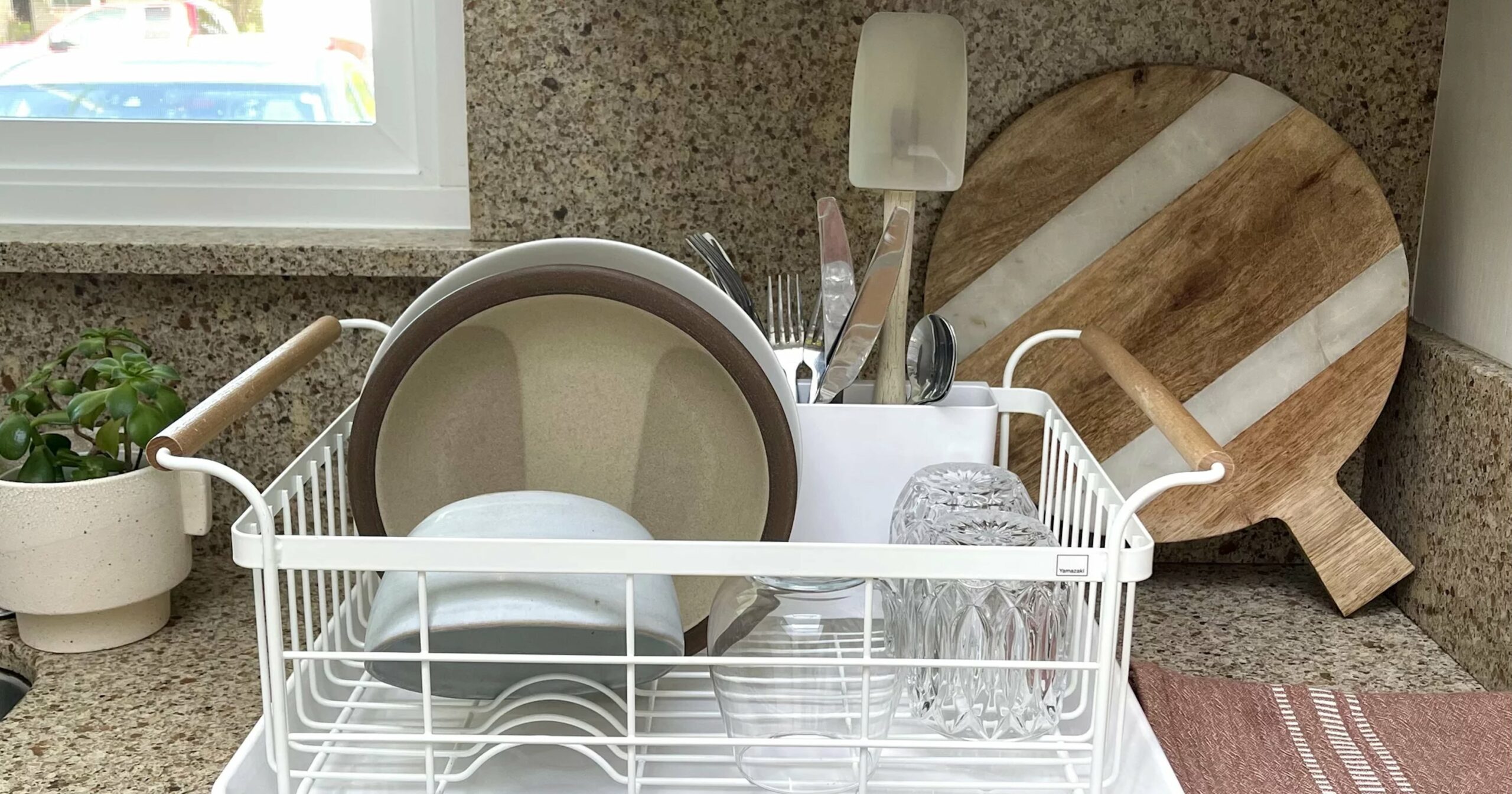Image Source: Hulu
Chef Carmy is a total badass – and he’s got the tattoos and scars to prove it. Whether you’re a fan of Hulu’s hit series “The Bear” or not, it’s hard not to have noticed images of Jeremy Allen White’s now infamous character floating around your feed. What’s most striking and noticeable? His tattooed forearms give his character an edge. And if you’re familiar with White as an actor, you know these tattoos are fake. Though he has his own impressive ink collection, you would never know it in the show thanks to the series department head of makeup, Ignacia Soto-Aguilar. It’s her job to cover them.
In a recent reel posted to Instagram by Soto-Aguilar, which has since garnered thousands of likes and millions of views, the makeup artist shows the entire process of covering White’s own tattoos and then applying Carmy’s character-defining tattoos and scars. In the 58-second time lapsed reel, Soto-Aguilar is seen covering five of White’s own tattoos, applying 11 tattoo transfers and five scar transfers. The ordeal, which she says has been perfected since season one, now takes approximately 24 minutes from start to finish.
Soto-Aguilar spoke to PS to spill the details of the process of covering up all of White’s personal tattoos and applying his character’s tattoos and scars for the show. Before she begins, “I have to make sure his skin is hair-free and prepped with a skin protectant.” She says he normally likes to shave his arms to prepare for the covering and application process.
Image Source: Courtesy of Ignacia Soto-Aguilar
After achieving a hairless canvas, she preps his skin to cover his tattoos. “I like to use Skin-Prep Protective Wipes by Smith and Nephew ($16). They protect the skin from getting irritated, and it also makes the adherence [of the tattoo and scar transfers] stick so much better. I love using them.” Afterward, Soto-Aguilar begins covering all five of his existing tattoos.
“I go in with my coverage process, which is a three-layer process. I like to apply the makeup with a paintbrush that I purchase from a craft store,” Soto-Aguilar says. “When I say makeup, I am using alcohol-activated makeup that comes in palettes, similar to when you use a watercolor palette – only you’re using alcohol instead of water. We like to use them a lot in film because they’re waterproof and they stay on until you actually remove it with alcohol.” Her favorite is the European Body Art (EBA) EVO Cream Palette ($95) because “it dries almost immediately, is highly pigmented, and has a latex-like consistency which helps prevent cracking.” She also uses the Sian Richards London 4K Longwear Cream Palette ($120) and Jordane Cosmetics Total Tattoo Coverage Palette (professional only). Keep in mind, however, that these are palettes for professional use. If you’re looking for a more budget-friendly option, she recommends Cover FX Total Cover Cream Foundation ($44).
The first layer in the process is color correction, where she combines a peach or orange color-correcting tone for his dark tattoos with a shade lighter than his skin tone. When applying the actual makeup, Soto-Aguilar uses a trick to create the most natural-looking skin-textured result. She cuts the bristles of the paintbrush very short, dips the brush into the alcohol and paint, mixes them together, then, holding the brush over the area she wants to cover, flicks the brush with her fingers so that the paint splatters onto his skin. She calls it the “flickering technique.”
“I like to flicker the paint so that when he sweats, it won’t crack as much because it’s splattered on, so there’s room for the paint to breathe from his pores,” she says.
Image Source: Courtesy of Ignacia Soto-Aguilar
“Since makeup dries darker as it oxidizes, you want to see the real color before deciding on the next layer of color. You never want to add anything while it’s still wet.” The second layer that she applies is the skin tone using the “flickering technique” again, waiting for it to dry before going on to the final layer. “For the third and final layer, I add a wash of flush tone to mimic the natural blood flow and texture of the skin. I usually determine flush tone by looking at the palms of someone’s hands after they make a fist.”
After the third and final layer is dry, she sets the makeup using RCMA Translucent Powder ($15), followed by PPI’s Zero Marble Spray ($15) or Kryolan Fixing Spray ($14) to prevent it from rubbing off on his clothing. “I apply anti-chafing cream over the [setting spray and] makeup to further reduce transfer onto his clothing.”
After White’s skin is dry, Soto-Aguilar goes in and applies the 11 tattoo and five scar transfers, which is not as extensive of a process. Both the tattoo and scar designs are printed on transfer sheets, similar to what is placed on the skin when you get an actual tattoo. After arranging them in the proper locations, she uses airbrush glue to secure them. “I use a medical-grade glue that’s going to make it stick to his skin.” She repeats the same process to apply the scars. “They’re just transfer tattoos, but they’re scars.”
Soto-Aguilar’s coverage and application are so full-proof that she says sometimes the makeup and transfers stay on his skin for days. “Sometimes he likes to live in Carmy; he likes to sit in it.” Aside from his dedication to his character, the “latex-like consistency makes it easy for his skin to breathe in it,” she says. “It’s almost easy for him to forget that it’s on his skin too.”
Image Source: Courtesy of Ignacia Soto-Aguilar
Taryn Brooke is a beauty writer and editor born and bred in New York City who has been in digital media for over 10 years. She is a contributing beauty writer for PS, Allure, Byrdie, and Well+Good.




